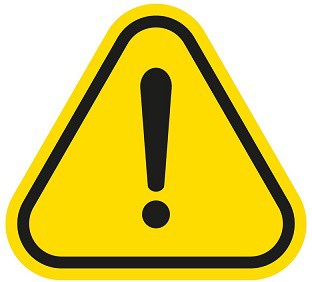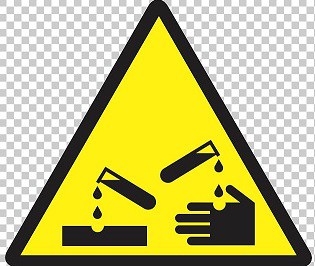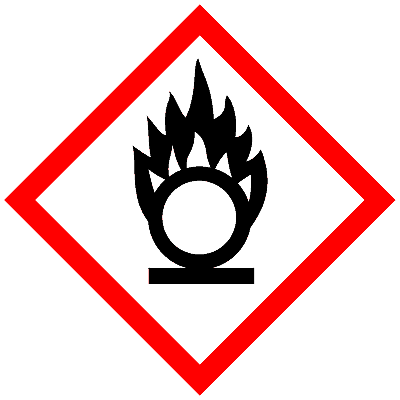Let’s discuss lab safety for kids in this article.
Need For Lab Safety
It has quite often been observed that children learn more effectively when they are practically involved with a particular subject. And this is observation is highly relevant in the field of science where children are constantly engaged in various aspects of the field. By being practically involved, children develop an intuition wherein they can scrutinize, question, touch, smell, and experiment with the various tools. The result of such practical involvement with science is witnessed in the development of their critical thinking skills.
While it is important to bestow a vast body of knowledge via the means of a science lab, it is equally important that kids ensure their safety whilst they are in the laboratory. There are laboratories out there that are concerned with safe experimentation. However, a majority of laboratories participate in dangerous experiments involving hazardous materials such as chemicals and electricity. As a result, it is important that apart from knowing about the miracles that occur within laboratories, students are also aware of the safety rules and measures to be implemented while working in the laboratories.
Generic Rules For School Laboratories
There are certain general rules which are followed by school laboratories all around the world. These rules should be heeded by the students whenever they are in the presence of scientific equipment. A few of these include:
- Maintain Safe Distances from Hazardous Materials and Equipment – Even though they are developed to promote creativity and facilitate the learning process for children, laboratories contain elements which should be kept far away from the reach of children. Kids should not be allowed to touch or fool around with any materials or equipment unless instructed to do so and under adult supervision.
- Constant Adult Supervision – Experimenting and learning about new concepts within the laboratory is a good thing. However, it should only be performed under the supervision of a teacher or a lab assistant. If neither is available, students should be prohibited from using the library owing to the presence of numerous risks.
- Experiments Should Be Performed With Complete Clarity – All experiments are performed in a laboratory should be undertaken only when the students have complete clarity over the subject. If the students are unable to follow up with a particular concept or experiment, they should make it a point to consult with their teacher and clarify it before proceeding.
- Alertness Should Be of Prime Importance – Being completely alert in a laboratory is a matter of prime importance. When the students are in a laboratory, they should be cautious owing to the presence of the hazardous chemicals and equipment that are present around them. Moreover, they should cease to perform all activities which are irrelevant in a laboratory. A few such activities include drinking, playing pranks, mobile phone usage, listening to music, etc.
- Familiarity With The Elements – When using the chemicals provided, children should mandatorily read the label on the bottle before using it. Failing to do so may lead to situations in which they might combine two hazardous elements and set off uncontrollable situations. Furthermore, while performing the experiments, students should be vigilant in keeping all equipment such as test tubes, beakers, glass rods, etc., that have been in contact with the chemicals away from your face, mouth, and the body.
- Disposal of Chemicals – At the end of certain experiments, students often find out that they are left with certain leftover chemicals. During such cases, do not put the leftover chemicals back into the original bottles. Instead, you should ensure the perfect disposal of the chemicals according to the guidelines provided by the laboratory assistant or the science teacher.
- Safety Equipment – Before a student enters the laboratory, it is predominant that they mandatorily equip themselves with the required safety equipment. This safety equipment could refer to the various clothing and accessories that are required including safety goggles (we use these ones), lab coats, and proper shoes. Take care that students do not wear loose clothes or sandals in the science labs. Moreover, girls should ensure that their hairs are tied.
- Examine The Apparatus – Before you eagerly go over to experiment and learn, you should make it a point to check the apparatus that has been provided to you. This is more important in the case that the apparatus is made of glassware. If you find that the glassware is chipped or cracked, do not try to use them.
- Allow The Heated Apparatus To Cool Down – A lot of experiments require the apparatus to be heated up. And it takes a significant amount of time for such an apparatus to cool down. Make sure that you allow them to do so. Rushing the process by using water may result in the apparatus becoming cracked and unusable. Moreover, when you are handling the equipment, ensure that you always use tongs or heat-protective gloves to pick up the apparatus.
- Stay Calm During Accidents – In the event of an accident, ensure that you do not panic. You will not be able to think clearly if you panic. Instead, you could take steps that minimize the extent upto which the accident affects you. Inform your teacher and the lab assistant immediately. Consult them for all the help and heed their instructions to reduce the damages.
Generic Rules for Home Laboratories
The safety rules which encompass are highly comprehensive. This is due to their ability to cover a wide range of safety issues. And it is due to this that such rules should be followed by people even in laboratories present at their homes. However, home laboratories also require an additional set of rules that are required to be followed to ensure perfect safety. These safety rules are:
- Prevent Using Contact Lenses – If you or your child use contact lenses for their vision needs, ensure that you don’t use them while working with chemicals. In numerous cases, dust tends to accumulate between your eye and the lenses leading to irritation and causing distraction from your experiment.
- Keep Unauthorized Experiments at Bay – While exploring through the experiment at school, your child is surrounded by trained individuals that include the lab assistants and teachers. However, it is highly doubtful that you be having support to such an extent at your homes. Therefore, it is greatly advised that you refrain from performing risky experiments within the confinements of your home.
- Keep Emergency Equipment Handy – While working with chemicals, keep in mind to check whether or not you have been facilitated with emergency equipment. Various tools that include an extinguisher, water, first-aid kit, and a telephone, should be kept handy.
- Work With Small Quantities – It is generally advised that you should work only with small quantities when you work at a home laboratory. Usually, this quantity should be equal to the amount that is enough to suit your needs. Doing so, allows you to easily take care of any accidents that involve fires, burns, and cuts.
- Keep Unauthorized People Away – When you are experimenting with your child, ensure that there are no unauthorized people present in your laboratory. Taking care of this allows you to greatly minimize the potential unforeseen accidents that could have occurred and affected you. If you do allow a particular person to accompany you to the lab, ensure that they adhere to the safety rules.
Essential Safety Symbols In Laboratories
Safety symbols are one of the greatest assets for lab safety. They can easily relay information to people by the means of a simple graphic asset. A few highly common symbols that are present in school laboratories are:
- General Warning – The General Warning symbol is one of the most common safety symbols. It consists of a large exclamation mark upon a yellowish background. The sign is used to describe potential dangers that might be present in the laboratory. To ensure safety, individuals are advised to follow the regulated procedures as mentioned by the laboratory.
- Safety Glasses – The safety glasses symbol are characterized by a simple pair of lab spectacles. The symbols indicate the possibility of a surrounding consisting of chemical, radiological, or mechanical irritants that may cause harm to the eye. The individuals are usually provided with laboratory glasses, designed with polycarbonate, in such situations.
- Flammable Material – Represented by the means of a black outline of a flame on an orange background, the Flammable Material symbol is used to describe the presence of substances which are capable of being ignited and burned in the air. These substances are also labeled as combustible substances.
- Hearing Protection – The Hearing Protection symbol represents a pair of headphones. In various laboratories, the noise has become a growing source of concern. Although some of such laboratories might have noise levels below the threshold level of damages, it is still quite loud to distract you from your work. Therefore, the Hearing Protection symbol warns individuals to equip themselves with the proper noise-cancellation gear before entering the laboratory to resume their work.
- Corrosive Hazard – The Corrosive Hazard symbol is picturized by the means of a symbol that has two test tubes leaking a corrosive liquid upon the hands of a person and a certain surface. The symbol is used to indicate the presence of hazardous materials, capable of harming the skin if placed in direct contact. Therefore, such materials should always be stored in locations where they cannot be reached by children.
- Oxidising Material Hazard – The Oxidising Material Hazard symbol is displayed via the means of a circular object which has been ignited. This entire symbol is placed on a yellow background. The symbol denotes the fact that there are substances which are capable of increasing the chances of fires and explosions in the absence of air.
Educational Videos Regarding Lab Safety
Videos are probably the best means of teaching kids about basic lab safety tips. There are various channels on YouTube which have produced videos regarding the subject of lab safety. These videos are available in various forms, however, the ones that seem to stick on with the kids are animated videos.
- Amoeba Sisters – General Lab Safety: The Amoeba Sisters is a YouTube channel which features exactly that, two amoeba sisters. The channel discusses the various aspects of science and enables children to understand even the most complex of concepts in an easy way. In their General Lab Safety video, they introduce children to the various lab safety guidelines with the help of memorable illustrations and animations. In their video, they cover a wide range of subjects that include lab dresses, disposal of materials, precautions, and such.
- CrashCourse – Lab Techniques & Safety: CrashCourse is another YouTube channel which educates children on the various subjects that range from sociology, computer science, film history, mythology, and many more. However, this channel is meant more of a more matured class of children. In their Lab Techniques & Safety video, the host Hank discusses the practical side of chemistry and teaches the various aspects of lab safety. Moreover, another aspect that makes this video engaging is its ability to combine animations and illustrations with real-time footage of the host.
- Buzzle – Essential Lab Safety For Kids That Must Not Be Taken Lightly: Buzzle is an educational YouTube channel. The channel produces videos which are meant for kids for all ages and can serve as a source for motivation, entertainment, as well as education. In their Essential Safety For Kids That Must Not Be Taken Lightly video, they discuss the various rules which are applicable when teachers and students are working in the laboratory. They understand the mishaps that take place in science labs and hence, they want to educate people on taking the right steps to prevent such mishaps.
Conclusion
In recent times, there have been a vast majority of individuals who have been spreading awareness regarding lab safety. This is because lab safety has become an aspect of utmost importance. Not only does it help to protect property and lab equipment, but it also facilitates in preventing cross-contamination. Moreover, it ensures that the records maintained are not tampered with owing to any mishaps that could have occurred.






